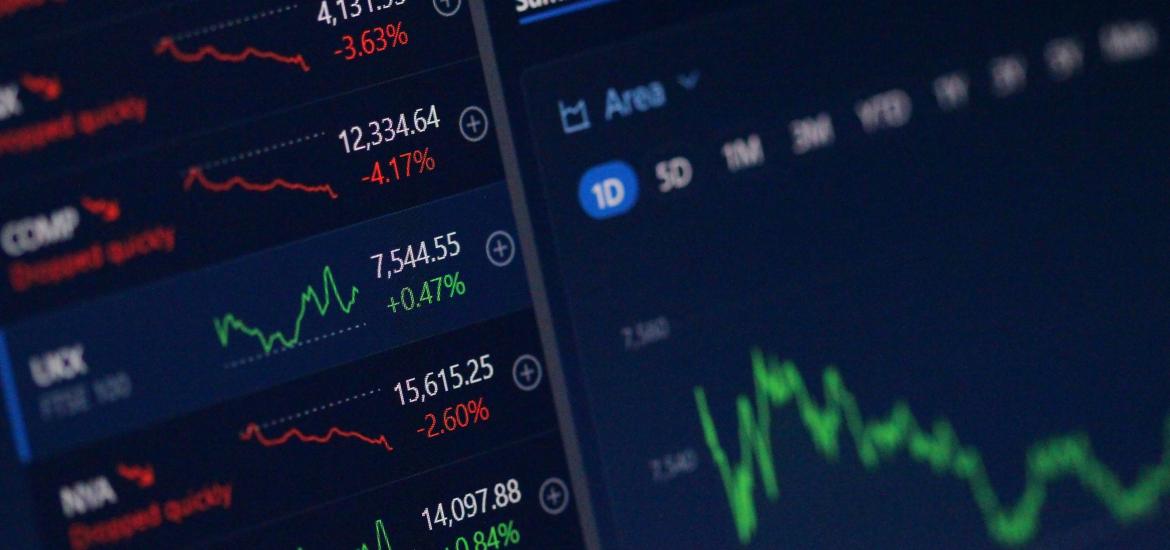
ESMO 2023 movers – who won and who lost?
The dust has settled on a momentous ESMO conference, which saw biotech activity amid big pharma’s practice-changing data.
The dust has settled on a momentous ESMO conference, which saw biotech activity amid big pharma’s practice-changing data.

The ESMO congress that ended on Tuesday was notable for the amount of data it featured that might affect medical practice, and as such was mostly about big pharma. However, there was plenty for smaller biotech groups too, in terms of both direct results and read-across from big company presentations.
While a moment of reckoning for KRAS players saw Amgen sell off and Revolution continue on its rollercoaster ride, undoubtedly the biggest theme of ESMO was antibody-drug conjugates. Not only did this see Padcev presented as a new bladder cancer standard of care, it also saw two licensing deals that underlined the importance of this mechanistic modality.
ESMO’s first day was overshadowed by a huge ADC transaction Merck & Co struck with Daiichi Sankyo, whose stock climbed 22%. Merck rose 2% – a small amount in percentage terms, but one that nevertheless added $5.9bn to the pharma company’s market capitalisation.
This analysis compares companies’ closing share prices on 23 October against 20 October. This isn't perfect, given that it will miss some fluctuations resulting from the 15 October ESMO abstract drop, as well as the Daiichi/Merck moves, which need to be compared against the 19 October close; However, it likely does capture the most important valuation changes over the ESMO weekend.
ESMO risers
| Company | 23 vs 20 Oct change | Note |
|---|---|---|
| Hansoh Pharma | 12.1% | GSK sets up Pfizer battle in B7-H4 |
| Adaptimmune | 6.2% | Data on afami-cel follow-on project ADP-A2M4CD8 |
| Ideaya | 5.5% | Darovasertib + Xalkori combo data |
| Olema | 2.9% | Palazestrant phase 2 monotherapy data |
| Merus | 2.3% | Merus gets a pre-meeting boost |
| Mabwell | 2.2% | Nectin-4 in focus |
| Beigene | 2.1% | |
| BioNTech | 1.8% | BioNTech still has work to do on Claudin-6 |
| Merck & Co | 0.7% | After failing to get Seagen Merck turns to Daiichi |
On this basis, in this sample of companies the winner emerges as China’s Hansoh Pharma, which both presented data on its B7-H4-targeted asset HS-20089, and saw this project picked up by GSK for $85m up front. Among the many datasets Merck presented, that on its KRAS G12C inhibitor MK-1084 tapped into a key biotech theme, especially given Bristol Myers Squibb’s acquisition of Mirati.
Among other risers Beigene’s 2% climb over the ESMO weekend belies a 6% fall since 13 October. Most notably, the group had data on its anti-TIGIT MAb ociperlimab, whose development Novartis recently declined to opt into, and which in the Advantig-206 liver cancer trial looked uncompetitive against Roche’s Morpheus-Liver readout at ASCO.
KRAS concerns
In this company cohort Revolution was the biggest faller, as results with its multi-RAS inhibitor RMC-6236 showed clear activity but missed some key efficacy bars. Thus Revolution’s rollercoaster continues: the group was one of few winners of the recent EORTC-NCI-AACR meeting, and rose 14% on 16 October after its ESMO abstract went live.
KRAS also weighed heavy on the minds of investors in Amgen, which presented additional underwhelming Lumakras data in colorectal cancer. On the other hand, results with its anti-DLL3 bispecific tarlatamab looked impressive, and suggested that targeting this antigen might have legs after all.
The micro-cap Harpoon Therapeutics is in DLL3 with HPN328, which put up reasonable early data at ESMO. However, Harpoon’s resulting share price uptick was wiped out by a $150m private placement on Monday. Other big pharma fallers over the ESMO data were AstraZeneca, whose datopotamab deruxtecan data allayed some fears but raised others, and Johnson & Johnson, whose Rybrevant/lazertinib combo has its work cut out challenging Tagrisso.
ESMO fallers
| Company | 23 vs 20 Oct change | Note |
|---|---|---|
| Revolution | -34.4% | Revolution sets the bar in pan-KRAS inhibition |
| Harpoon | -23.3% | Tarlatamab hits the target for Amgen |
| Exelixis | -8.8% | Late-breaking Cabometyx data in neuroendocrine tumours |
| Bicycle | -8.1% | Padcev hits its home run |
| Gritstone | -7.9% | |
| Bolt | -7.8% | Phase 1 data with BDC-1001 in HER2-expressing tumours |
| RayzeBio | -6.4% | Red flags for PSMAfore |
| PDS Biotechnology | -3.2% | |
| Amgen | -2.1% | Lumakras still looks like a colorectal also-ran |
| AstraZeneca | -1.2% | Some Tropion fears allayed |
| J&J | -1.1% | Butterflies for J&J |
Several companies without a significant ESMO presence fell over the ESMO period. For instance, Bicycle was off 22% versus 13 October as Padcev’s EV-302 data left its accelerated approval strategy for zelenectide pevedotin in tatters. Gritstone fell 21% in the same period in the face of competition in neoantigen immunotherapies from BioNTech and Moderna.
Focusing just on the weekend misses a few other ESMO-relevant moves. Agenus was off 7% versus 13 October as it pinned its hopes on a combo filing for balstilimab plus botensilimab, which featured at ESMO in a separate setting, while Immutep climbed 15% as eftilagimod alpha’s Keytruda combo showed more intriguing data, though a randomised trial is needed to confirm the promise.
Finally, the jury remains out on Ambrx, whose ARX517 targets PSMA, just like Novartis’s radiopharmaceutical Pluvicto. First-in-human data left Ambrx unmoved over the weekend, after the stock had fallen 40% as of 13 October – though the past few few days have seen it recover half of those losses.
All of ApexOnco’s coverage of ESMO, including previews, is available free to view.
4241













